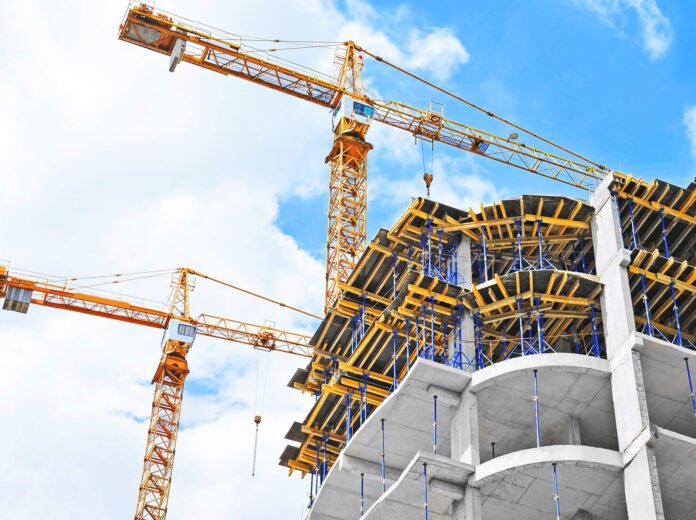The role of temporary works in construction projects is invaluable. These structures offer support and stability during building, demolition, or alteration activities. They include scaffolding to excavation supports and falsework, which, if properly managed, enhance safety, boost cost efficiency, and ensure smoother workflow. However, to enjoy these perks, project managers and teams must adhere to best practices in temporary works management. This guide highlights eight key practices to help you optimize your temporary works for successful project completion.
Table of Contents
Risk Assessment
Risk assessments help identify potential hazards that could arise during the installation, use, and removal of temporary works. Checking aspects like environmental conditions, equipment performance, and human error enable project teams to minimize accidents and project delays.
A detailed risk assessment ensures that every potential danger is documented and mitigated through appropriate measures, such as enhanced worker training, installing additional safety features, or selecting more suitable materials for the temporary structure. For example, assessing ground conditions before excavation can prevent collapses or other unforeseen incidents.
Furthermore, risk assessments should not be a one-time task; they should be an ongoing process throughout the project lifecycle. Regular reviews allow teams to adapt to changing circumstances, such as weather conditions or project scope changes.
Collaboration
Effective collaboration among stakeholders is essential for temporary works management. From designers to site managers, everyone involved in the project should have a clear understanding of their role in managing temporary works. Frequent communication and regular updates on the progress of temporary works help address issues promptly.
Reliable design teams collaborate closely with the construction team to ensure that the temporary works design aligns with the permanent structures and project timelines. For instance, if changes to the design of a permanent structure occur, the temporary works must be adjusted accordingly to maintain safety and functionality.
Additionally, using collaborative project management tools can facilitate information sharing and streamline communication among team members. These tools can keep everyone informed of project updates, document changes, and track compliance with safety regulations, enhancing overall project efficiency.
Design Considerations
The design should account for the load capacity, durability, and adaptability of the temporary structure throughout its use. For example, scaffolding must be designed to support the weight of both workers and materials, while falsework must sustain the load during the construction of concrete structures.
An experienced temporary works engineer like Hyperon Engineering oversees the design process, ensuring that all legal and regulatory requirements are met. Designs should be reviewed and approved by qualified professionals, and alterations should be made if unforeseen challenges arise.
Moreover, the design should consider how the temporary works will be used. For example, will workers be accessing multiple levels of scaffolding? If so, incorporating safety features such as guardrails and proper access points is essential. Proper design considerations ensure that temporary works not only fulfill their purpose but do so safely and efficiently.
Competent Supervision
Supervision is a key factor in the successful implementation of temporary works. Appointing competent and experienced supervisors ensures that temporary works are installed, used, and dismantled correctly. Supervisors should have an in-depth understanding of both the design and practical aspects of temporary works, as well as the ability to identify and resolve potential issues on-site.
Regular site inspections and close monitoring of the installation process help prevent errors that could compromise the integrity of the temporary structure. For example, if scaffolding is found to be improperly assembled, immediate corrective action can be taken to avoid accidents. Competent supervision also ensures that workers adhere to safety protocols, reducing the risk of accidents or structural failures.
Compliance with Regulations
Adhering to local and national safety regulations is vital in temporary works management. Construction sites are governed by various legal frameworks that dictate how temporary works should be planned, designed, and managed. Regulations often vary depending on the region or type of project, so it’s important to stay updated on the specific requirements relevant to your site.
Failure to comply with regulations can result in hefty fines, project delays, and, most importantly, compromised worker safety. By ensuring that all temporary works meet regulatory standards, project managers can avoid legal repercussions while promoting a safer work environment.
Training and Awareness
Investing in proper training for workers involved in temporary works is essential to ensure safe and efficient operations. Workers should be well-versed in the correct procedures for setting up, maintaining, and dismantling temporary structures. Training should also cover emergency protocols and hazard identification to empower workers to act quickly in the event of an issue.
Regular safety briefings and refresher courses help maintain high standards of awareness, ensuring that workers are equipped to handle any changes or challenges that arise on the job site. For example, training sessions can be tailored to address specific risks associated with the particular temporary works being used on the project.
Moreover, promoting a culture of safety awareness can enhance overall project performance. When workers are encouraged to prioritize safety and share their knowledge, it fosters a proactive approach to risk management.
Maintenance and Inspection
Temporary works require ongoing maintenance and inspection throughout their use. Regular inspections should be scheduled to ensure that the structures remain in good condition, especially after extreme weather events or heavy usage. Any signs of wear, deformation, or instability should be addressed immediately to prevent accidents or structural failures.
Maintenance may involve tightening connections, reinforcing weak points, or replacing damaged components. Keeping a detailed log of all inspections and maintenance activities ensures accountability and provides a clear record that can be reviewed in the event of an issue. For example, if a scaffolding system shows signs of wear, prompt action can prevent serious accidents.
Additionally, involving workers in the inspection process can foster a sense of ownership and responsibility. Training them to identify potential issues encourages a culture of safety and vigilance on the job site.
Safe Dismantling and Removal
The final stage of temporary works management is the safe dismantling and removal of the structures. This process is just as important as the installation, as improper dismantling can pose significant safety risks. A detailed plan for removal should be developed early in the project, outlining the step-by-step process to ensure that the temporary works are taken down safely and efficiently.
Workers involved in dismantling should receive specialized training, and the process should be closely supervised to prevent accidents. For instance, if the dismantling of scaffolding is not performed carefully, it could collapse, endangering workers below. Properly dismantling temporary works ensures that the site is cleared for the next stage of construction without compromising safety or causing damage to the permanent structures.
Final Thoughts
Temporary works are integral to the success of many construction projects. With thorough risk assessments, fostering collaboration, adhering to design standards, ensuring competent supervision, complying with regulations, investing in training, maintaining ongoing inspections, and safely dismantling structures, project teams can ensure that temporary works contribute to a smooth and safe project completion. Implementing these practices not only enhances safety but also improves project efficiency and overall quality, leading to successful outcomes and satisfied stakeholders.








